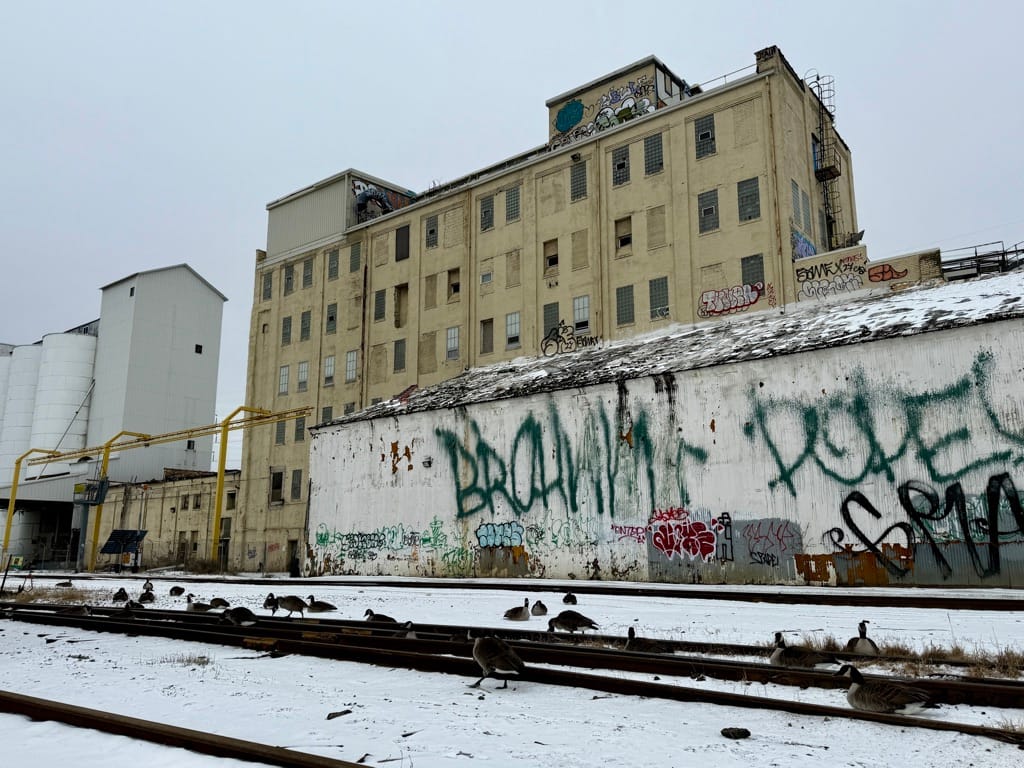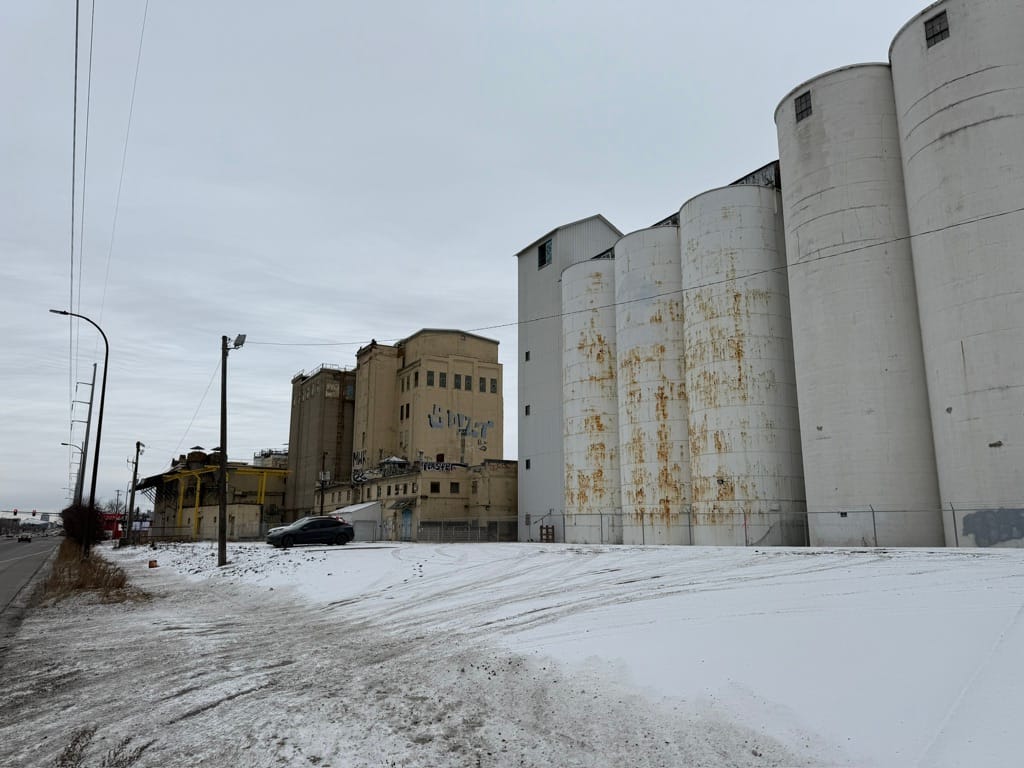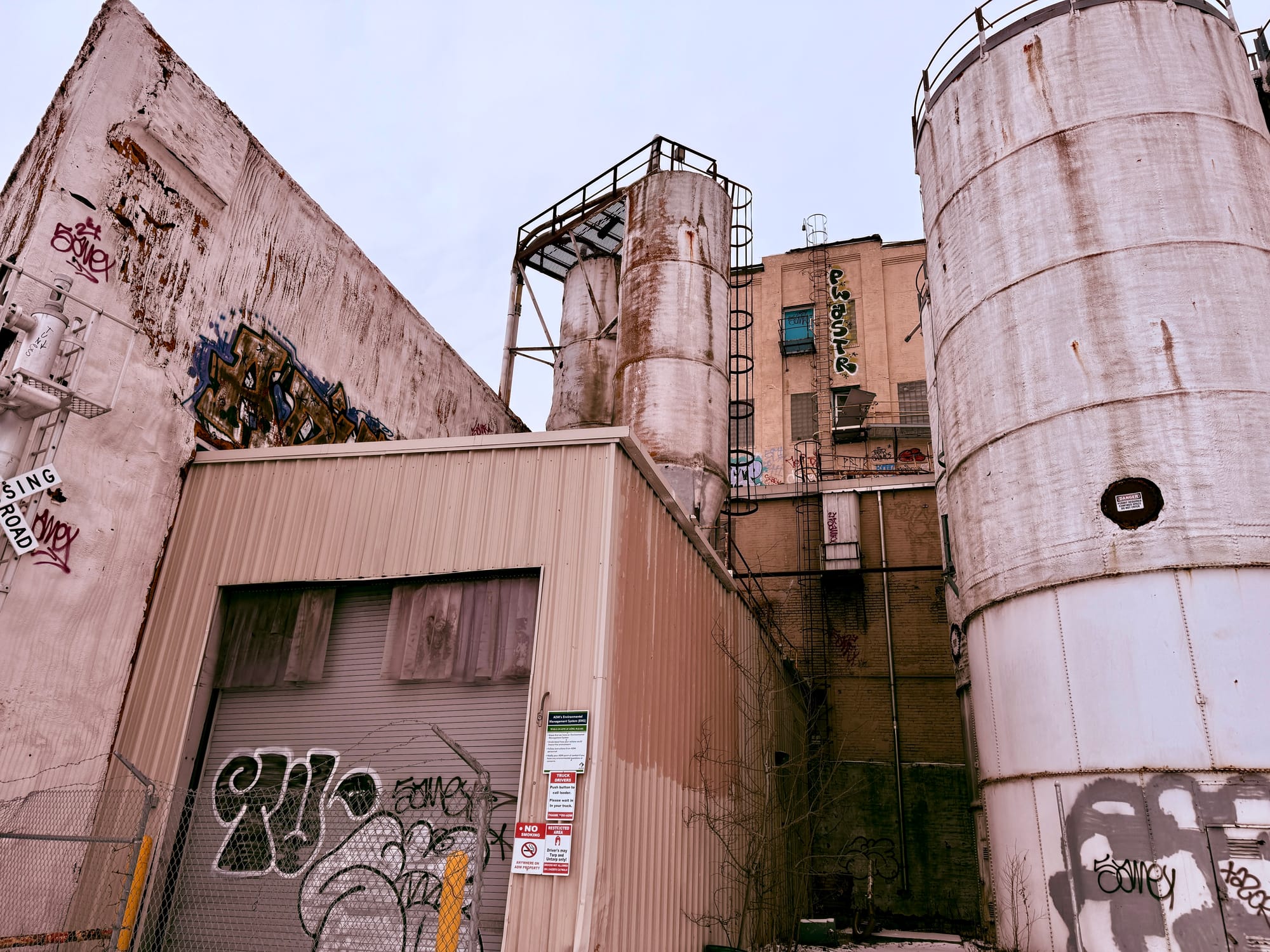🏭 Vacant Nokomis Mill may soon come down
ADM is seeking approval to demolish the mill it shuttered in 2019, with an early-stage plan to sell the site for apartment redevelopment.

The abandoned Nokomis Mill at 35th and Hiawatha may soon meet the wrecking ball, with a loose plan to replace it with an apartment development.
On Tuesday the city’s Heritage Preservation Committee narrowly approved a plan from owner Archers Daniels Midland (ADM) to demolish its decaying structure. Local developers Zachary Construction Group say they plan to buy the site and redevelop it into a mix of 240 units of market-rate and affordable housing, though the plan is in its early stages.
ADM shuttered the mill in 2019 as it prepared to open a new facility in Illinois and listed it for sale, touting its proximity to light rail, downtown, and the airport as ripe for redevelopment. Since then, the 2.4-acre property has sat vacant, extensively trespassed despite round-the-clock security, fencing, and mobile cameras. The commodities giant reports that it is spending $676,000 a year on security but that there are simply “too many entry access points, too many locations to scale the building” to keep it secure.

Up for debate on Tuesday was whether the structure should receive “Demolition of Historic Resource” approval, which requires owners hoping to tear down historically important structures to demonstrate that destruction is either necessary for safety reasons, or because they have no reasonable alternative. The commission approved the request on a 5-4 vote, on the grounds that the high costs of renovation make reuse unfeasible. Dissenting voters raised concerns about clearing the entire site, and encouraged the company to explore options to retain some elements and pursue the various public funds and tax credits available for historic reuse.
The site doesn't have an official historic designation, but the city considers it a historic resource given its role in Minneapolis’s most notable industry. The original six-story brick building and neighboring six steel bins were built in 1914, replacing what had been a glass factory since the 1880's. The complex grew piecemeal over the years — the eight bins on the south end were built in 1924, the warehouse on the northwest corner in 1927, an engine room in 1931, a loading dock in 1945, and a bulk flour storage building in 1961, among other changes.

It was part of a district of as many as nine mills and elevators built along Hiawatha’s industrial rail corridor at the peak of the milling trade. Of those, only two remain in operation: ADM still grinds wheat into flour at its Atkinson Mill at 38th and Hiawatha, the last remaining industrial mill in the city, and General Mills stores oats for Cheerios at its Elevator T at 36th and Cheatham.
The notoriously odorous Purina Mill at 38th Street was torn down in 2010 and replaced with the Longfellow Station and CityLine Apartments. Cargill's Minneapolis Seed Company facility at 34th and Cheatham closed in 1983 and was converted to offices, which were put up for sale last year. The Harvest States Elevator, with its distinctive 29,000-square-foot faded mural completed in 1992, was purchased for bottom dollar at a county auction in 2015 and is now used as rentable storage. And as covered here last month, the bins at General Mills’ Checkerboard Elevator at 38th and Cheatham are slated to be torn down and converted to a mix of affordable and market-rate apartments, while retaining the towering headhouse in the center.
Tuesday’s vote was the first of several layers of approval that will be required for the potential development at 3501 Hiawatha. Next, the company must apply for a “wrecking permit.” As part of Tuesday’s decision, the commission included a caveat that it will need to approve a plan for how ADM will document the history of the site before granting the permit. That often takes the form of elements like public signage or filing detailed plans and photos of the complex into the Library of Congress’s Historic American Buildings Survey.
If the building does come down, the site will likely require extensive replacement of contaminated soils and other possible environmental cleanup. If a large-scale apartment development is eventually proposed, that would also require review through the planning commission and possibly the zoning board. Construction on projects of that size typically takes between one and two years.



